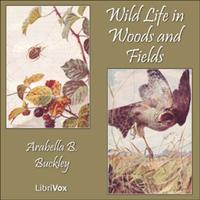SPRING FLOWERS
WE are always glad when April comes. Then we can find many flowers on our way to school. Even in February there are snowdrops in the orchard and Peter knows where he can some-times find a primrose or violet in flower.
But we cannot get a good bunch until April. Before that the plants are busy growing their leaves.
The first bright flowers we find are the daffodils in the fields, and the anemones in the woods. We call the daffodils "Lent lilies" and we put them in the church at Easter. They have very long, narrow leaves which come straight out of the ground. Each flower hangs on its own tall stalk. It has deep yellow tube in the middle, with a crown of pale yellow leaves round it. If you dig up a daffodil plant you will find that it has a bulb like an onion. Paul says this is why it blooms so early. It stores up food in the bulb in the autumn. Then it uses this food in January to make its leaves and flowers.
The wood-anemone is Peggy's favourite flower. It is called the "wind-flower" because it nods so prettily in the wind. Its soft pink and white flower stands high up on a long stalk, which has three feathery green leaves half-way down. When the sun shines, it is a little pink and white cup, and when the clouds gather and the rain falls, it shuts up in a tight bud, till sunshine comes again.
Peggy once bit one of the leaves of the anemone. It burnt her tongue and tasted very bitter. Then Paul told us that the plant is poisonous. This is one reason why there are so many anemones in the wood. Animals will not eat the leaves, but leave them alone to grow.
The anemone has not got a bulb. It has a thick brown stem under the ground in which it stores its food.
Before the daffodils and anemones are over, the primroses and violets cover the banks. It is pretty to watch the primrose plant on a wet morning. The leaves are not smooth. They have hills and valleys all along them. The water runs so cleverly down the valleys of the leaf. These guide it down to the roots, so that the plants can drink.
How busy, too, the bees and flies are. They settle first on one primrose then on another. We know what they find there. If you pull off the yellow crown of the primrose, and suck the end of the tube, you will taste something sweet. This is the honey that the bees come to find. And besides the honey they carry off some yellow dust from flower to flower. Paul says this is good for the flowers, as we shall learn some day.
The honey in the violets is not so easy to find. But we have found it. When a violet looks straight at you, it shows five purple leaves and a little yellow beak in the middle. But if you look behind, you will find a small long bag, like the finger of a glove. We have often pulled this off and sucked it. It is full of honey. When the bee sits on the flower, and thrusts her head into the yellow beak in the middle, she sips out the honey with her tongue from the bag or spur behind the flower.
With primroses and violets and blue-bells the bees can now find plenty of honey to fill their hives.

